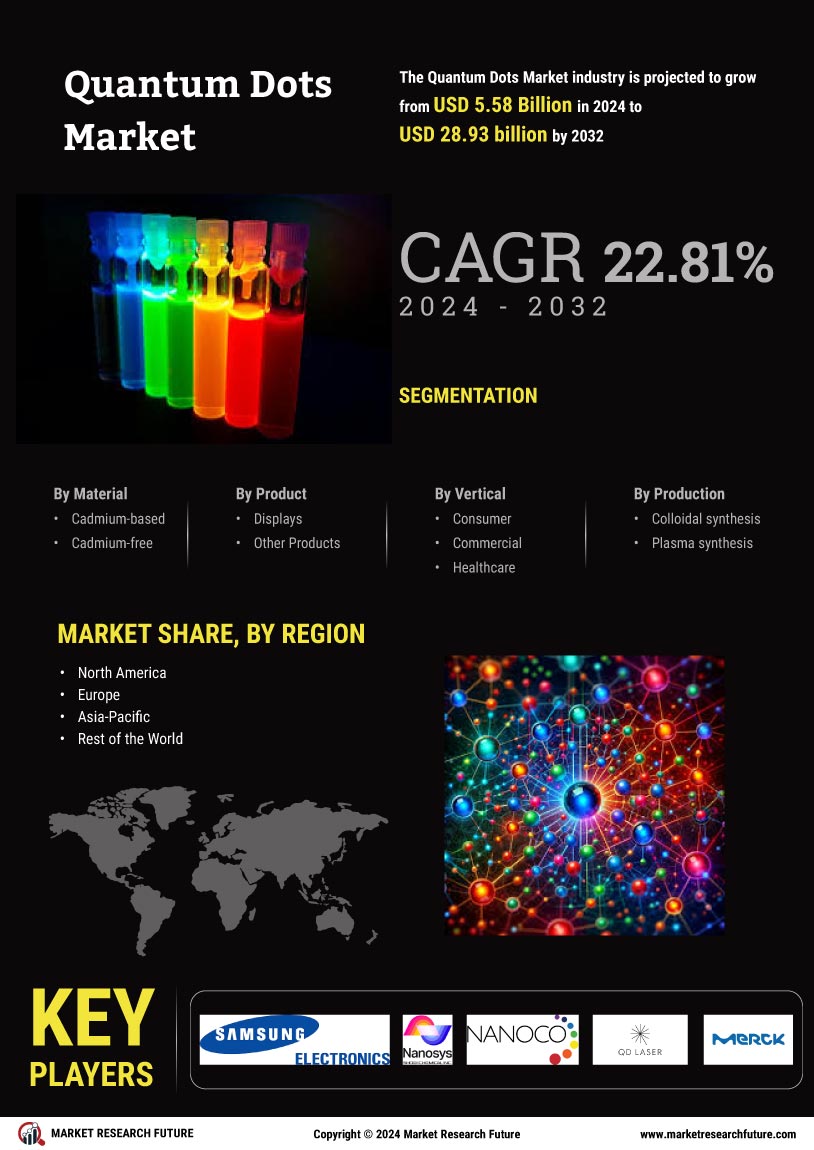The Quantum Dots Market is currently characterized by a dynamic competitive landscape, driven by rapid technological advancements and increasing demand for high-performance displays. Key players such as Samsung Electronics (South Korea), Nanosys (United States), and LG Display (South Korea) are at the forefront, each adopting distinct strategies to enhance their market positioning. Samsung Electronics (South Korea) focuses on innovation, particularly in the development of quantum dot displays for televisions, which are gaining traction due to their superior color accuracy and energy efficiency. Meanwhile, Nanosys (United States) emphasizes partnerships with major display manufacturers to integrate its quantum dot technology into a variety of applications, thereby expanding its market reach. LG Display (South Korea) is also heavily investing in research and development to enhance its quantum dot technology, aiming to solidify its leadership in the OLED and LCD markets. Collectively, these strategies contribute to a competitive environment that is increasingly centered around technological innovation and strategic collaborations.
In terms of business tactics, companies are localizing manufacturing and optimizing supply chains to enhance efficiency and reduce costs. The Quantum Dots Market appears to be moderately fragmented, with several key players exerting significant influence. This fragmentation allows for a diverse range of products and innovations, but also intensifies competition as companies vie for market share. The collective influence of these key players shapes the market structure, fostering an environment where technological advancements are paramount.
In August 2025, LG Display (South Korea) announced a strategic partnership with a leading semiconductor manufacturer to co-develop next-generation quantum dot materials. This collaboration is expected to enhance the performance of their display technologies, allowing LG Display to maintain its competitive edge in the rapidly evolving market. The strategic importance of this partnership lies in its potential to accelerate innovation and improve product offerings, thereby attracting more consumers.
In September 2025, Nanosys (United States) unveiled a new line of quantum dot materials designed specifically for use in solar energy applications. This move not only diversifies Nanosys's product portfolio but also aligns with the growing trend towards sustainability in technology. The strategic significance of this development is profound, as it positions Nanosys at the intersection of renewable energy and advanced materials, potentially opening new revenue streams.
In October 2025, Samsung Electronics (South Korea) launched a new quantum dot television series that incorporates AI-driven features for enhanced user experience. This initiative reflects Samsung's commitment to integrating cutting-edge technology into its products, thereby reinforcing its market leadership. The strategic importance of this launch is underscored by the increasing consumer demand for smart home technologies, suggesting that Samsung is well-positioned to capitalize on this trend.
As of October 2025, current competitive trends in the Quantum Dots Market include a pronounced focus on digitalization, sustainability, and the integration of artificial intelligence. Strategic alliances are increasingly shaping the landscape, enabling companies to pool resources and expertise to drive innovation. Looking ahead, competitive differentiation is likely to evolve, with a shift from price-based competition to a greater emphasis on technological innovation, supply chain reliability, and sustainable practices. This evolution suggests that companies that prioritize these aspects will be better positioned to thrive in the future.

















Leave a Comment